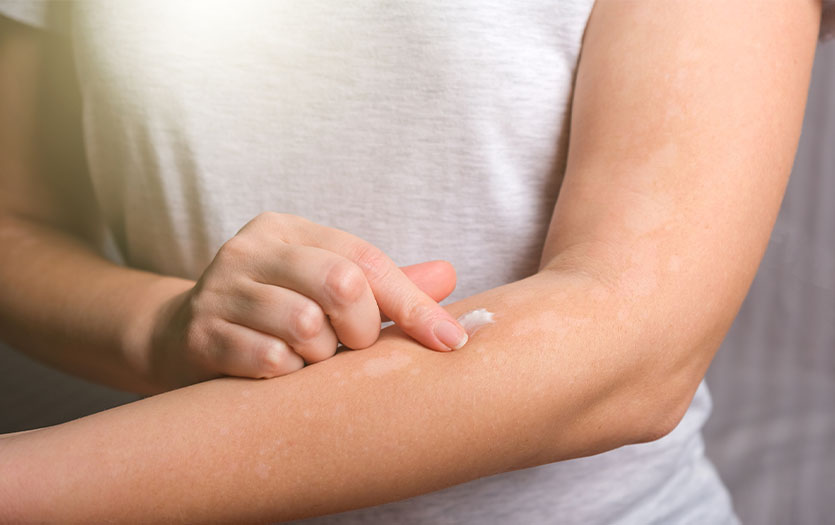
This post was written by Stacy Butler, NP, PPG – Allergy, Asthma & Immunology.
It’s a great time of year to get out in nature. Hiking, gardening, camping, yardwork and other wilderness adventures are more enjoyable during these warm months, but also come with the potential risk of encountering poison ivy, a plant that’s most abundant during spring and summer. Let’s take a closer look at the rashes triggered by poison ivy and potential treatment options for relief.
What is poison ivy and why does it irritate our skin?
Poison ivy is a common poisonous plant that is typically found in wooded areas. The plant has three leaflets on each leaf and will grow wild as a vine or a bush. Poison ivy produces an oily sap that contains urushiol. When you come in contact with this oil, it can produce a form of allergic contact dermatitis, or an itchy rash on your skin. The rash may develop within a few hours to a few days after contact with the oil.
A poison ivy rash typically appears as red, itchy bumps that will often develop into fluid-filled blisters. The fluid from these blisters does not contain the urushiol oil and is not contagious. The rash itself is not contagious, either, and won’t spread to other areas of the body. If you develop new rashes on different areas of your body, that’s because that area of skin also came into contact with the urushiol oil, but the rash took longer to develop there.
You can also come into contact with poison ivy’s urushiol oil if it gets on your pet’s fur, clothing or bedding or from a contaminated household item like gardening tools. If you do touch poison ivy in any way, it’s very important to wash everything you might have touched after including your clothing and bedding.
How to treat a poison ivy rash
Rashes from poison ivy typically resolve on their own without much treatment within 1-2 weeks. To help relieve the itch, the following remedies and over the counter (OTC) products might help:
- Poison ivy creams such as calamine lotion or topical astringents, like Burow’s Solution
- Cold compresses
- Lukewarm baths filled with colloidal oatmeal or baking soda
- Antihistamines (oral tablets or sprays) will help with the itch
- Prednisone for severe rashes
If possible, try to avoid scratching the rash. When you scratch, bacteria can be introduced into the skin from your nails and cause an infection.
When should I seek medical attention?
It’s important to contact a healthcare provider if:
- The rash is present on your eyes, nose, mouth or genitals
- The rash appears as red streaks, you develop a fever, or other signs of infection
- You develop difficulty breathing, hives or severe swelling
Enjoy the outdoors this summer, but remember the old adage for avoiding poison ivy, “leaves of three, let them be.”



